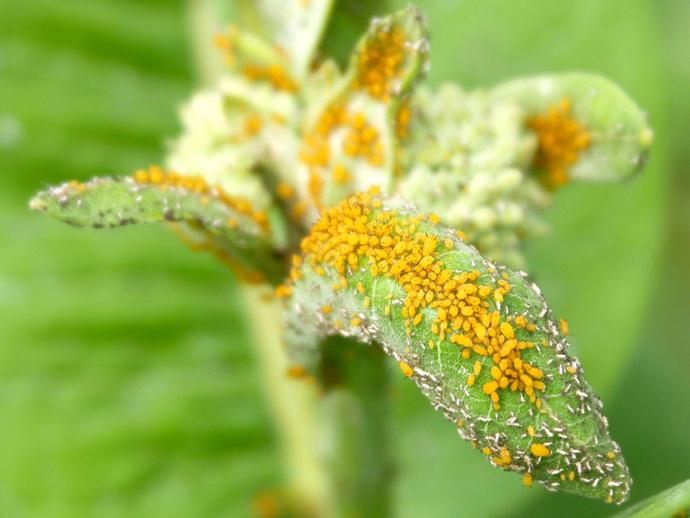July 25, 2020
If you have any milkweed growing near you, you've probably spotted a whole bunch of these small yellow insects covering the new leaves at the top of the plant. This is Aphis nerii, commonly called the milkweed aphid or the oleander aphid.
It's believed that this aphid probably originated in the Mediterranean where it fed on oleander, which is its main host plant. However, it has since become widespread in tropical and warm temperate regions around the world.
Perhaps the most remarkable fact about these aphids is that males have never been observed in the wild! How is that possible? These aphids are viviparous and parthenogenetic. "Viviparous" means that rather than laying eggs, these aphids give birth to live young, while "parthenogenetic" means that the aphids form viable embryos without the need for fertilization. This not only means that these strong, independent aphids don't need no man; it also means that a female aphid's offspring are clones of the mother! #BenInNature
This post brought to you by VMNH supporters Janet and Richard Ashby.
ABOUT THIS POST
Social distancing can be difficult, but it presents a great opportunity to become reacquainted with nature. While he is working from home, Administrator of Science Ben Williams is venturing outdoors each day to record a snapshot of the unique sights that can be found in the natural world.
NATURE PHOTO IDENTIFICATIONS
If you discover something in nature that you would like help identifying, be sure to message us right here on Facebook with a picture (please include location and date of picture) and we'll have our experts help you identify it!

 Hours & Admissions
Hours & Admissions Directions
Directions

